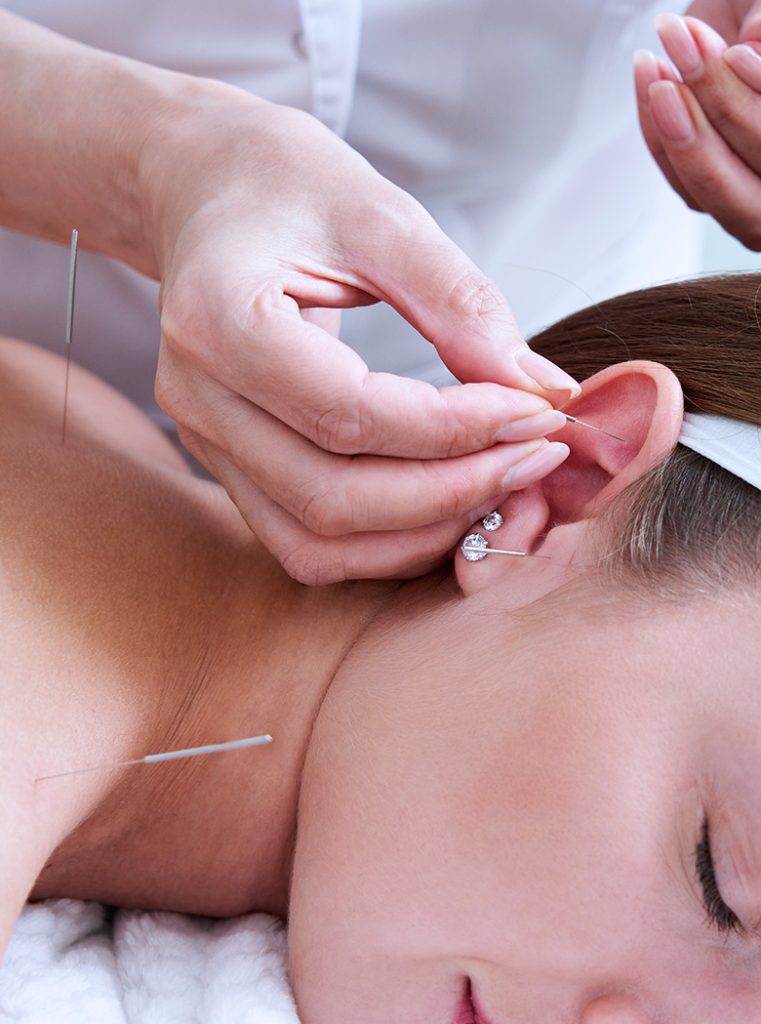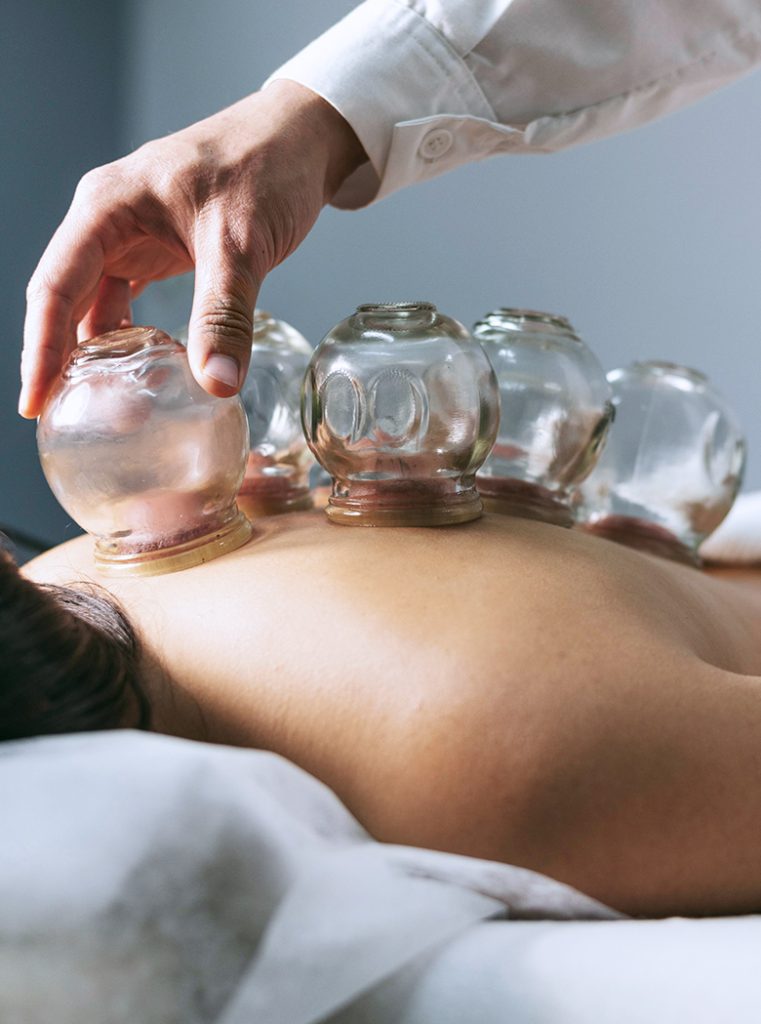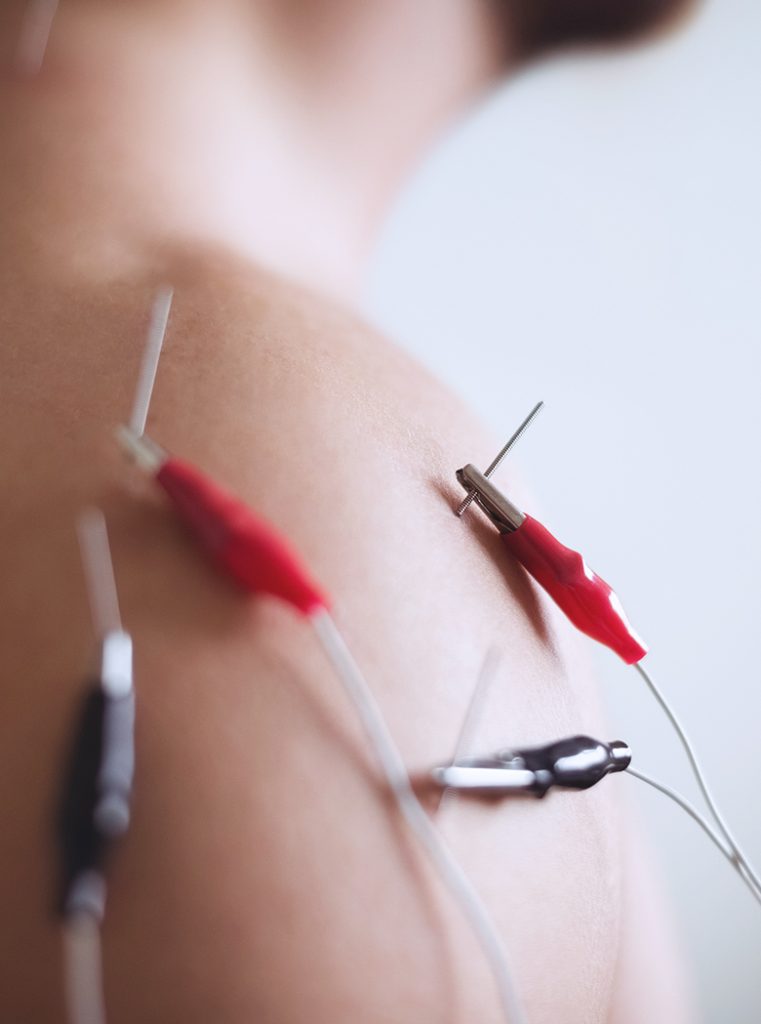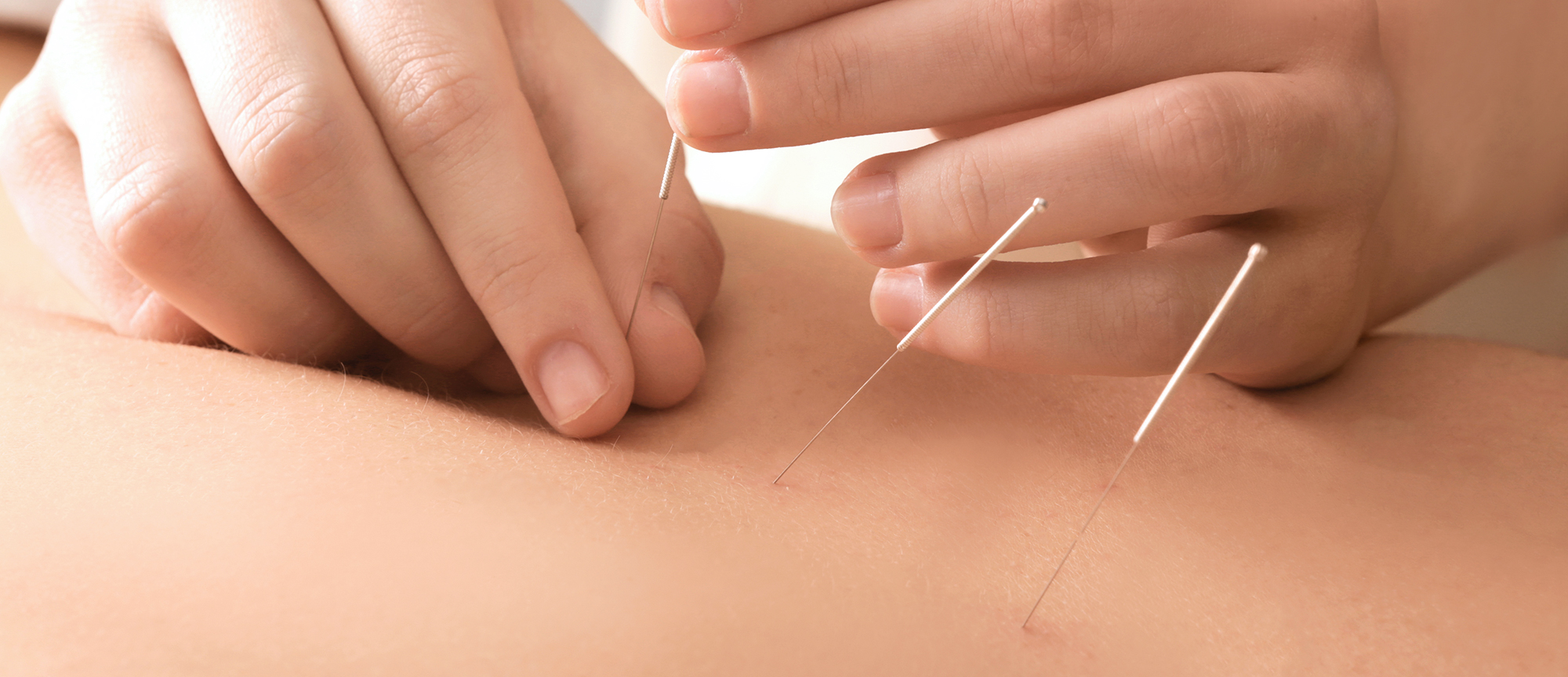Acupuncture
What is Acupuncture?
Acupuncture is the practice of penetrating the skin with thin, solid, metallic needles which are then activated through gentle and specific movements of the practitioner’s hands or with electrical stimulation.
The history of acupuncture has its roots in the ancient practice of Traditional Chinese Medicine: Traditional Chinese Medicine practitioners believe the human body has more than 2,000 acupuncture points connected by pathways or meridians. These pathways create an energy flow (Qi, pronounced “chee”) through the body that is responsible for overall health. Disruption of the energy flow can cause disease. By applying acupuncture to certain points, it is thought to improve the flow of Qi, thereby improving health.

Modern medicine and scientific studies
have shown that acupuncture points are supplied
by high concentrations of nerve endings and bundles, mast cells (used for immune function) lymphatics and capillaries. In addition, acupuncture points have a lower electrical resistance, compared with the surrounding skin.
Acupuncture points are believed to stimulate the central nervous system. This, in turn, releases chemicals into the muscles, spinal cord, and brain. These biochemical changes may stimulate the body’s natural healing abilities and promote physical and emotional well-being.
National Institutes of Health
(NIH) studies* have shown that acupuncture is an effective
treatment alone or in combination with conventional therapies to treat a variety of conditions, the list of which continues to grow as acupuncture has become more widely accepted as a
viable modality to treat many conditions with few complications and side effects.
*https://www.nccih.nih.gov/health/acupuncture-in-depth


What to expect
The Acupuncturist will examine the patient person and assess conditions using techniques and protocols similar to those of the more ” traditional” practitioners and professionals.
Individuals will typically sit or lie down during the procedure. The acupuncturist will use single-use, disposable, sterile needles and insert them into specific points in the body based on the patients’ conditions and needs. The type, gauge (thickness) length and shape of the needles vary, again depending upon the individual patient’s needs and conditions, but all are solid (non-hollow) made from surgical grade steel, sterile and single use.
Those who are not familiar with acupuncture or have never experienced this type of treatment are often afraid of the pain associated with penetrating the skin. However, most patients report a slight stinging sensation and that there is little or no pain associated with the insertion of the needle. Some will experience a dull ache at the base of the needle. In rare cases, pain can reach uncomfortable levels at insertion – however, removing the needle eliminates the pain.
Typically, the needles will stay in place for 20–30 minutes, although this will vary depending on the procedure. Heat via Infrared Lamps or other sources of heat will be applied to the area to complement healing. The needles are then removed and disposed of.
OTHER MODALITIES
The Acupuncturist may often use other modalities in combination with or individually to treat specific conditions and ailments. These include:
MOXIBUSTION:
Special herbs are prepared and placed on targeted areas of the body. These preparations are burned over the strategic points to stimulate healing using direct heat.PRESSURE (ACUPRESSURE)
Physical pressure is applied (either with the fingers/hands or special tools) to strategic points in the body to stimulate energy and blood flow – much like the use of needles – however the skin is not pierced.FRICTION (GUA SHA)
Special tools are used to scrape and stimulate specific areas of the body to improve circulation, break up scar tissue and promote healing.SUCTION/TARGETED VACUUM THERAPY (CUPPING)
Specialized cups are placed on the body and a vacuum chamber is created on specific areas of the body to separate muscles and fascia to promote blood flow and release toxins in areas of distress.
INFRARED THERAPY
Far Infrared and Near Infrared frequencies are emitted in specifically targeted areas or in generalized areas to cover a larger area of the body. The special frequencies and range of the EM spectrum provide pecialized benefits beyond simple heat to promote healing and improve health.ELECTRICAL STIMULATION
Various types of specialized equipment that emit targeted electromagnetic energy (radio frequency or microwave radiation in specific frequencies, ultrasound and other) are emitted through a handheld wand or via pads connected to the skin to break up scar tissue, reduce inflammation, and promote blood flow to accelerate healing.
Micro electrical currents may also be utilized in combination with acupuncture needles to emit Impulses of electricity deeper into muscle and body tissue to promote healing.
CONDITIONS TREATED
The majority of patients seek acupuncture as a treatment for pain management due to trauma or conditions from injuries or accidents as well as chronic musculoskeletal conditions such as:
neck and back pain
arthritis
fibromyalgia
muscle strains
joint sprains and bone fractures
myofascial pain
repetitive use injuries such as carpal tunnel syndrome and tennis elbow
However Acupuncture has been shown to be effective in treating a much wider range of medical conditions. A list from the Johns Hopkins Medicine organization includes the following
DIGESTIVE
Gastritis
Irritable bowed syndrome
Hepatitis
Hermorrhoids
EMOTIONAL
AnxietyDepression
Insomnia
Nervousness
Neurosis
EYE-EAR-THROAT
RhinitisSinusitis
Sore throat
GYNECOLOGICAL
Menstrual painInfertility
Musculoskeletal
ArthritisBack pain
Muscle cramping
Muscle pain and weakness
Neck pain
Sciatica
NEUROLOGICAL
HeadachesMigraines
Neurogenic bladder dysfunction
Parkinson’s disease
Postoperative pain
Stroke
RESPIRATORY
Allergic rhinitisSinusitis
Bronchitis
MISCELLANEOUS
Irritable bladderProstatitis
Male infertility
Some forms of impotence
Addiction
